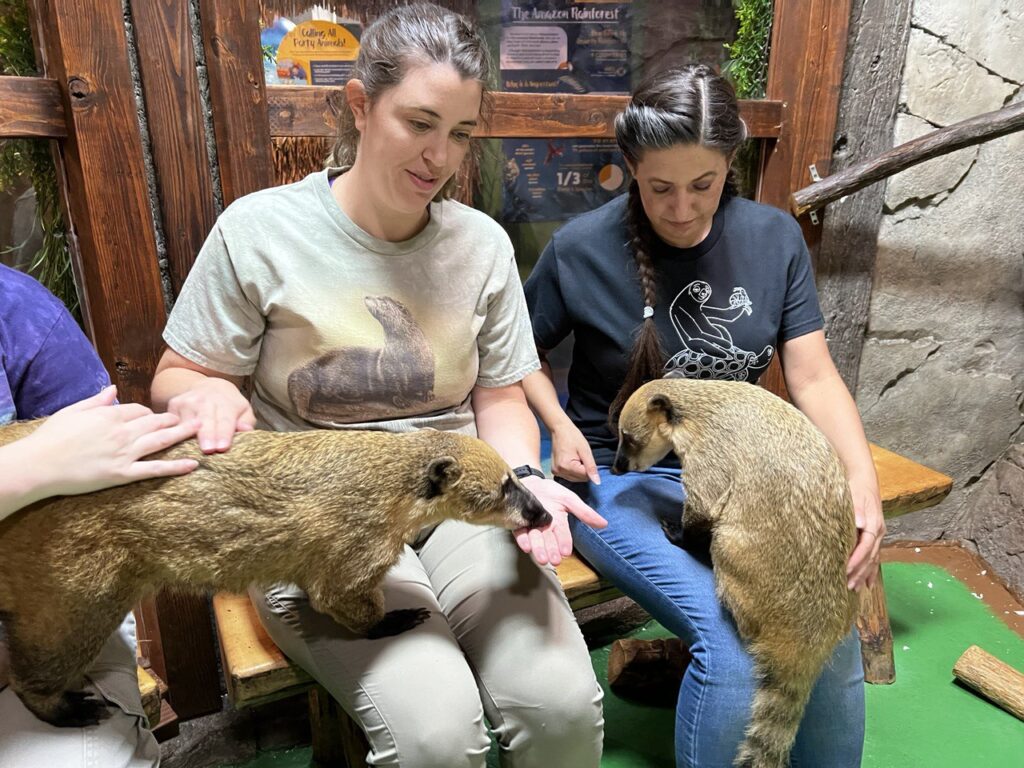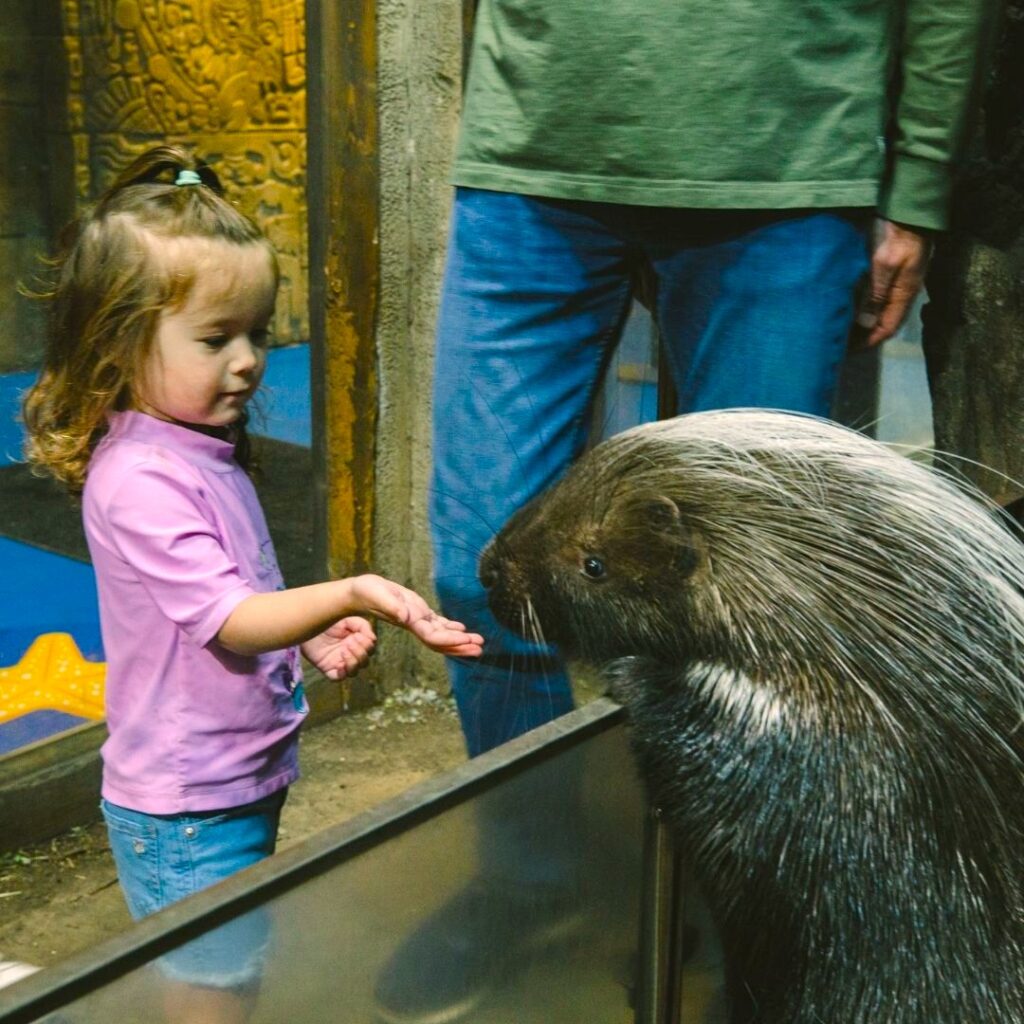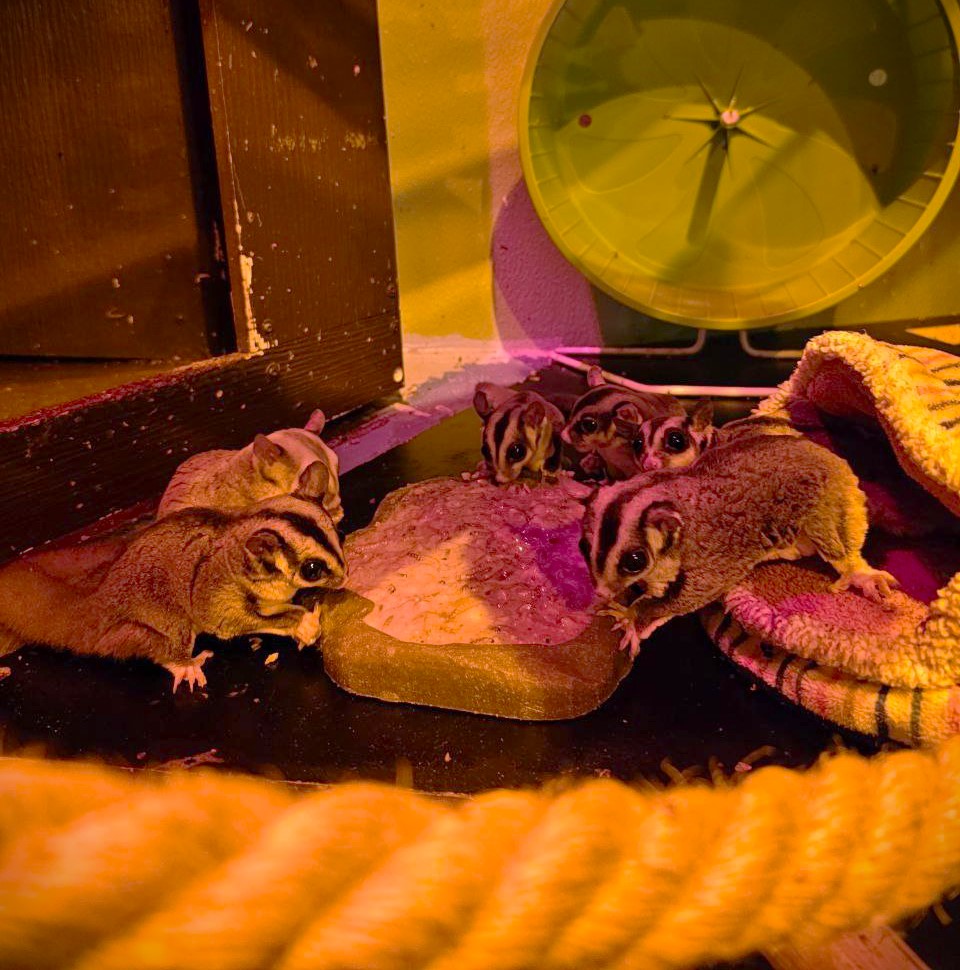The Magical Moon Jellyfish
Share it on:
Jellyfish are difficult to tell apart, so if you come across a jellyfish at the beach or at SeaQuest [city] [state], it can be difficult to know what kind of jellyfish you’re looking at! If you see a jelly with a white translucent bell and four horseshoe-shaped pink or purple circles, you’ve likely found a Moon Jellyfish!
Moon Jellyfish are fascinating creatures that can be found in coastal waters all around the world. They are most often found near the coastlines of North America and Europe, where the temperatures are close to their ideal. The moon jellyfish can survive in temperatures between 21 and 88 degrees Fahrenheit but prefers the range of 48 to 66 degrees.
Live Jellyfish in Space!
In 1991, 2,478 jellyfish polyps (an early phase of the jellyfish life where they attach to surfaces) went to space in the space shuttle Columbia! Scientists wanted to study the effect weightlessness would have on the jellyfish as they developed. Like humans, jellyfish use calcium crystals to sense gravity and judge which way is up. Scientists were hoping to compare the development of the calcium crystals in space to those on Earth, in hopes of getting a glimpse at how people born in space might adjust.
They discovered that the calcium crystals seemed to develop normally while in space. When the jellyfish returned to earth, there were over 60,000 of them! However, when they came back down, scientists found that the jellyfish who had been born in space had a hard time telling which was up and down. The new jellyfish suffered from a bad case of vertigo!
Jellyfish Communities
In the wild, Jellyfish can form into large groups or “smacks.” These smacks can then congregate into larger groups called blooms— which can consist of over a thousand jellies. Blooms are more likely to form in the summer months since the rising temperatures encourage the jellyfish to reach maturity more quickly.
There are many causes of blooms: overfishing of jellyfish predators, coastal development, and water becoming oxygen-deprived. With fewer predators, more of the jellies are likely to survive in an area. Coastal development gives extra space for jellyfish polyps to form, so more jellyfish will be born in an area. Oxygen-deprived regions are difficult for most species to endure, but jellies thrive there! In those areas, there are less likely to be predators, which helps them survive.
Make Your Friends ‘Jelly’ With These Fun Moon Jellyfish Facts
- Moon Jellyfish are also known as moon jellies, saucer jellies, and common sea jellies.
- Jellyfish are made up of 95% water and have no blood or heart.
- Moon Jellies are carnivorous, feeding on organisms like crustaceans, diatoms, protozoans, mollusks, tunicate larvae, and rotifers.
- Common predators of the moon jellyfish include birds, sea turtles, and fish. In South-East Asia, moon jellies are even a common snack to humans.
- Moon Jellyfish are able to survive in a variety of conditions, and can even thrive in dirty, polluted water that is low in oxygen.
- Moon jellyfish are considered harmless to humans because although they are venomous, their stingers aren’t capable of penetrating our skin!
If you’re planning your trip to SeaQuest [city] [state], make sure to leave plenty of time to watch the moon jellyfish in their habitat. While you’re there, check out the other amazing animals that call our facility home, like the Blacktip Reef Shark or our friendly Iguanas.
Make sure to book your tickets to meet the moon jellyfish at SeaQuest [city] [state] today! [tickets]




